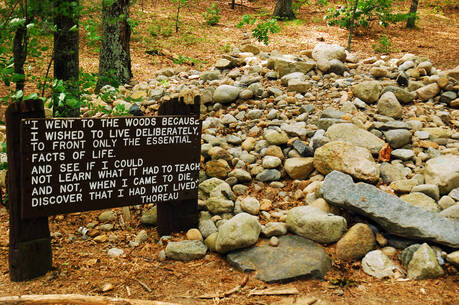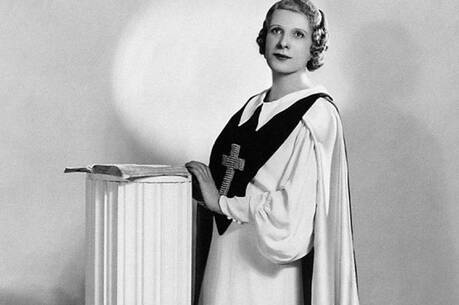Treasures to Go
In January 2000, the Smithsonian American Art Museum (until recently known as the Smithsonian Museum of American Art) closed until 2004 for major renovations to its home in the historic Old Patent Office Building in Washington, D.C. Instead of storing all of its collection in vaults inaccessible to the public, the administrators of the collection wisely and generously chose to send over 500 of the museum’s finest artifacts concurrently in eight exhibitions on a tour entitled Treasures to Go. By the completion of the tours, the eight exhibitions will have been shown in over 70 museums nationwide.
What distinguishes the Smithsonian American Art Museum’s collection from the collections in other major museums is that it is not a gathering solely of artworks by the usual suspects. Many of those artists are included (Hopper, Willem de Kooning, Frankenthaler, Noguchi, O’Keeffe and Albers, to name but a few), but works by these artists are displayed in the same galleries with works by lesser-known yet very talented artists. The resultant new contexts created by these juxtapositions provide an experience that is quite memorable, expansive and satisfying. The books in this review are catalogues of four of the eight exhibitions.
Each of the books has essentially the same format: a brief introduction by the American Art Museum’s director, Elizabeth Broun, followed by full-page, high-quality color reproductions of each of the approximately 50 artworks with paragraph-length commentaries. These are not scholarly volumes; rather, they are beautiful, compact (approximately 9 inches square and each 112 pages in length), wonderfully illustrated and reasonably priced.
In the volume Scenes of American Life, the artwork (all paintings save for three sculptures) dates from the early 1900’s to 1980, although the majority were created in the 1930’s and 1940’s. While all the images are representational, they have great stylistic varietyfrom the folk art style to American Impressionism to Art Deco and Realism. Among these works are depictions of the rough-and-tumble working class urban world of the Ash Can School; images of coal miners and plantation harvesters; reflections of hopes of new possibilities as expressed in Ray Stron’s 1934 painting of the construction of the Golden Gate Bridge; the sleek homages to American industrialism by the Precisionist School; several stunning paintings by Edward Hopper; a haunting depiction of modern alienated urban life by George Tooker; and an almost expressionistic landscape by American Gothic painter Grant Wood.
Arte Latino is filled with dazzling images of work spanning three centuries by Latin American artists, and spirituality looms large. The legacy of the Roman Catholic Church is foundational for much of the art in this volume. Some of it reflects the Roman Catholicism brought to the New World by the Spanish, and there are wonderful santos sculptures from the 18th to the 20th centuries that reflect the continuity of the santos carving tradition. Other works reflect Santería, the syncretistic religion that combines images and devotions of Catholicism with African belief systems, and still others combine Roman Catholicism with pre-Columbian spirituality. The work of many of the 20th-century artists included in this volume reveals the influences of the great Latin American tradition of mural painting. Often the political, religious and personal overlap. And there are works that represent highly personal mythology, such as the slightly tongue-in-cheek house altar dedicated to Dolores del Rio by Amalia Mesa-Bains. In addition to the santos figures, this volume is rich with other types of sculpture, from the austere granite piece by Jesús Bautista Moroles to the large and exuberantly expressive fiberglass work Man on Fire by Luis Jiménez. Many of the works convey an epic sense, whether it be Alfredo Arreguín’s rich and intricate vision of Eden or the stark images of Las Tres Marías by Judith Baca. Struggle, street life, the family, the journey within, faith and inner triumph are among the major themes found in this volume.
Contemporary Folk Art includes work by the self-taught or naïve artists of the past 40 years, and the Smithsonian American Art Museum has an especially rich collection of folk art. These artists have not had any formal training and operate outside of the mainstream modern art conversations. All the works are representational, although none could be called realistic. There is a raw primitive feel about much of the work, and many of the works are able to capture simultaneously a sense of urgency and a childlike wonder, as artists tackle religious (often apocalyptic) themes. The paintings lack any kind of perspective, stacking the figures and scenes. There is often an obsession with great detail, as if the artist was trying urgently to deliver the words and images of salvation to the viewer, and because the stakes are so great, the more admonitions the better. Text plays an important role in a number of the works here, whether it is in the complete story of Job by Hugo Sperger, arranged sequentially in bands like a comic strip, or in the Jesse Howard’s The Saw and the Scroll, which mixes personal statements by the artist with extensive quotes from the Book of Genesis. There is an expressive energy in these naïve figures, both carved and painted, that takes us to a level beyond the notion of art as commodity. For these self-taught artists, it is art as necessityand therein lies its power.
Modernism and Abstraction features some of the best-known American artists of the 20th century as well as their contemporaries. The 19th-century French artist Honoré Daumier stated that the modern artist attempts to create artwork that is of one’s time. In the 20th century, this meant being influenced by the scientific and technological discoveries of the era; a re-examination of the spiritual, but in nontraditional ways; and an interest in visual stimuli from nontraditional sources, such as non-Western art and the art of the untrained or the insane.
Modern art as we know it in the West began in Europe, with French artists asserting their pre-eminence in the last half of the 19th century. Americans had to go to Europe to learn about the new movements. Gradually, there was more exposure on this side of the Atlantic to the European art movements, an awareness that was accelerated by several major events, including the 1913 Armory Show in New York that juxtaposed work by American artists with some of the reigning European artists of the time, and World War II, an event that brought many prominent European artists to American shores. Drawing on the inspiration of such movements as Cubism, Surrealism, Expressionism, as well as the Bauhaus, an American movement emerged in the 1940’s and 1950’s that was known as the New York School. This volume contains stunning works by some of the best first- and second-generation artists of the New York School. There are also representatives of the San Francisco Bay Area’s important Figural movement and the quietly sublime Washington Color School.
The one weakness in these volumes, especially evident in Modernism and Abstraction, is the way in which they are arranged. By listing the artists alphabetically, the editors have given us books that can be handy references for particular artists, but do not reflect the organization of the exhibitions or the stories that the exhibitions are telling. Nevertheless, because of their beauty, succinctness and clarity of text, and affordability, the volumes are worth the investment.
This article also appeared in print, under the headline “Treasures to Go,” in the February 4, 2002, issue.








